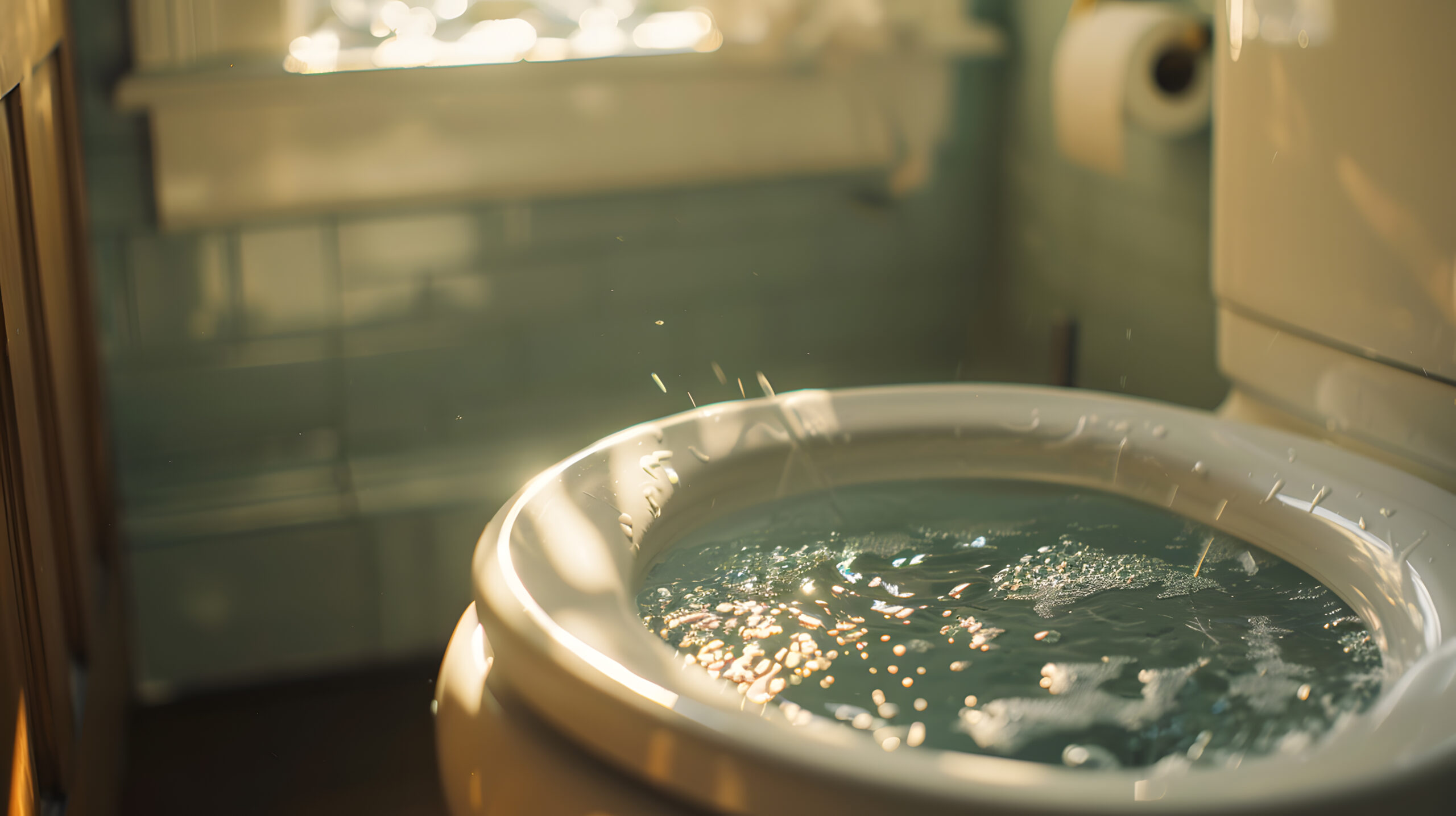
An overflowing toilet is a common household emergency that requires immediate action to prevent water damage and maintain a sanitary environment. Here, we provide a detailed guide on the steps you should take if you find yourself in this situation, and when it’s time to call a professional plumber.
Immediate Steps to Take
When your toilet starts to overflow, acting quickly is crucial to minimize damage. Here are the steps you should follow:
- Stop the Water Flow:
- Locate the shutoff valve behind the toilet and turn it clockwise to stop the water from continuing to fill the bowl.
- If the valve is stuck or you cannot locate it, remove the tank lid and lift the float to stop the water from entering the tank.
- Contain the Overflow:
- Use towels or a mop to soak up any water that has overflowed onto the floor. This helps prevent water damage to your flooring and reduces the risk of slipping.
- Clear the Blockage:
- Use a plunger to try and clear the blockage. Place the plunger over the drain and push down firmly, then pull up sharply to create suction.
- If a plunger doesn’t work, a toilet auger (also known as a plumbing snake) can be used to break up or retrieve the blockage further down the pipe.
- Clean and Disinfect:
- After resolving the immediate issue, clean and disinfect the area thoroughly to prevent the spread of bacteria and maintain hygiene.
Understanding the Causes
Several factors can cause a toilet to overflow, including:
- Clogged Drain: Accumulation of toilet paper, waste, or foreign objects can block the drain.
- Faulty Float Mechanism: If the float mechanism in the tank malfunctions, it can cause continuous water flow.
- Blocked Vent Pipe: The vent pipe allows air into the plumbing system to help water flow smoothly. A blockage can disrupt this balance and cause overflows.
When to Call a Professional
While many minor clogs can be handled with a plunger or auger, some situations require professional intervention:
- Persistent Clogs: If your toilet continues to clog frequently, there may be a deeper issue within your plumbing system that needs professional inspection.
- Sewage Backup: If you notice other drains in your home backing up simultaneously, this could indicate a serious sewage problem that requires immediate attention.
- Damaged Pipes: If you suspect that your pipes are damaged or corroded, a professional plumber can perform a thorough inspection and recommend repairs or replacements.
Preventive Measures
To prevent future toilet overflows, consider these preventive tips:
- Regular Maintenance: Periodically check and maintain your toilet’s internal mechanisms to ensure they are functioning properly.
- Proper Use: Avoid flushing non-flushable items such as wipes, sanitary products, or excessive amounts of toilet paper.
- Install a Backwater Valve: This device can prevent sewage from backing up into your home during heavy rains or sewer system overloads.
Contacting a Professional
If your toilet is overflowing and you’re unable to resolve the issue, don’t hesitate to contact a professional plumber. Our team of experienced plumbers is available to provide prompt and reliable service. We can quickly diagnose the problem and implement effective solutions to prevent further damage.
Conclusion
An overflowing toilet can be a stressful situation, but knowing the immediate steps to take can help mitigate damage and maintain a sanitary environment. If you encounter persistent issues or suspect a deeper problem, professional plumbing services are essential. Contact our expert team for quick and efficient solutions to all your plumbing needs. We are committed to providing top-notch residential plumbing services in Coconut Creek to keep your home’s plumbing system in excellent condition.



